The reason people are so quick to share their opinions is because it triggers a sense of internal validation. Sharing your opinion makes you feel important and smart. We all like to feel that way, right?
From a business standpoint, it makes sense to get opinions from our audience so we can understand where we are getting things right and where we could improve. It can also allow us to send more targeted information or answer questions before customers even ask.
How do we access those opinions?
Through the power of surveys!
If the thought of creating a survey and managing all the responses makes you want groan, there’s good news! You don’t have to create a traditional survey to increase customer engagement.
Formal surveys have their place, of course. But, there are also less formal survey methods such as chat bots, blog comments, or even social media posts where you can glean information about who your customers are and what their interests are from social traffic.
Here are a few survey examples to show you how you can increase engagement, create better content, and even power-charge your bottom line through surveys.
Get Ideas For Your Content
The average company spends a total of 26% of their entire marketing budget on content marketing. In fact, by the end of 2019, the content marketing industry is expected to be worth a total of $300 billion.

Content marketing is clearly big business, but still presents many challenges. One of the greatest challenges many companies face is keeping up with ambitious publishing schedules in their overall content marketing strategy.
It can be difficult to come up with interesting, engaging content week after week. So, what do you do when your creative well has run dry?
Survey your readers and customers to find out what type of content they actually want to read!
The comment section on your blog can be a perfect place to find inspiration.
For example, Lendio, a marketplace for small business financing, includes a comments section on every blog post.
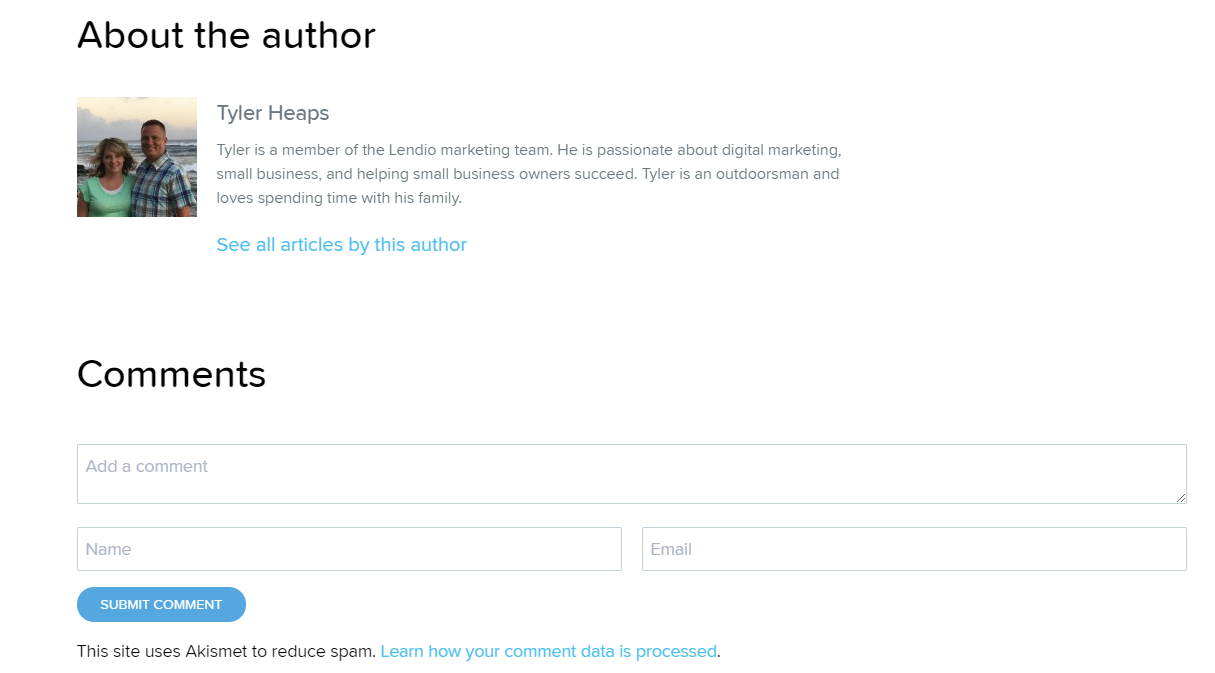
Here, readers can ask questions about resources, get clarification about complex topics, or share their experiences.
If one person asks a question, you can bet other people have the same question!

Using blog comments, you can create content that will grab readers’ attention because you are addressing topics they care about.
Another place to find content ideas is in your content reviews.
Take podcasting for example. It’s widely popular as a way to grow your business. But getting ideas for the content isn’t always easy.
To quickly and informally survey customers for more engagement, ending your podcast with a simple call to action can help drive more reviews.
This is a strategy that podcast hosting company Buzzsprout undertakes, then turns those weekly comments into content that their audience is interested in. For example, taking common questions on podcast microphone technique and turning it into a full-blown guide:
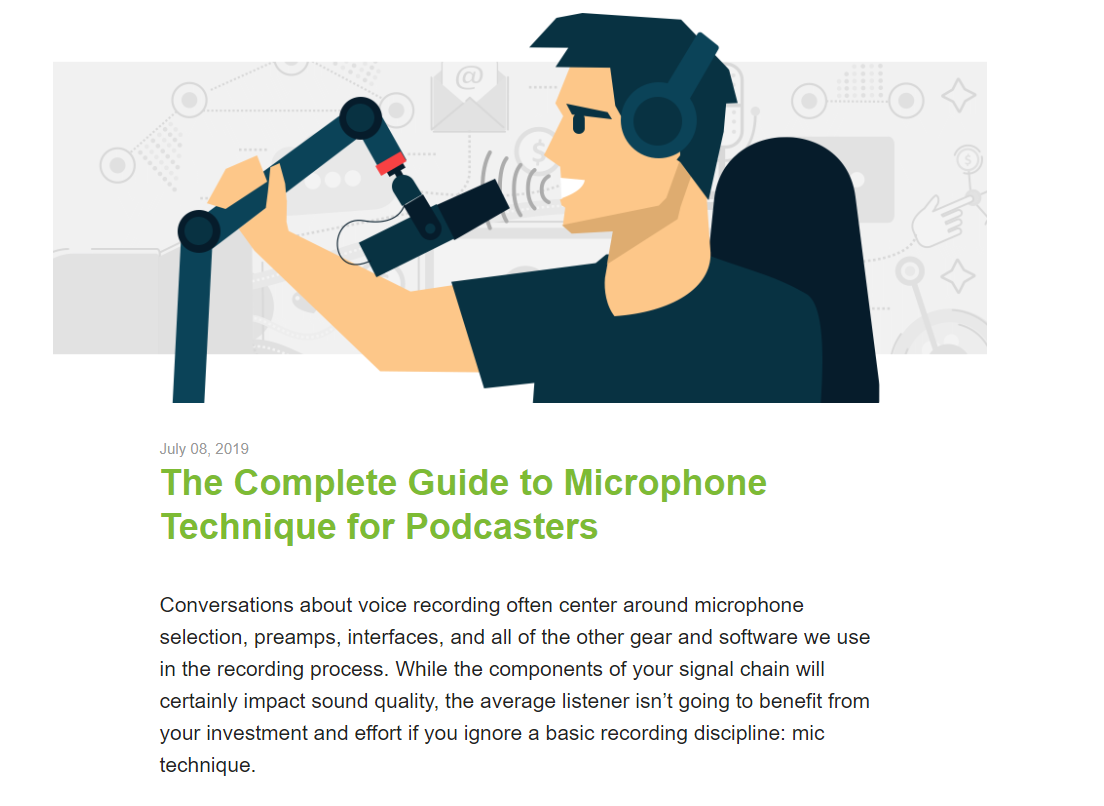
Power Your FAQs Pages & Documentation
Creating technical documents and frequently asked question pages might not be something that gets you super excited.
The challenge of documentation and FAQ pages is that when they are done well, you often get little to no feedback. Users find what they need and complete the task at hand.
You do hear about them when they are poorly created, lack useful content, or are difficult to navigate.
So, how do you create documentation or FAQs that empower users instead of making them want to pull their hair out?
By mining questions from company reviews to generate ideas for questions!
Here’s the thing—you understand your product or service inside and out. It is easy to get caught up in your own head and miss obvious questions or areas where information is lacking.
Using the fresh perspective of your audience can help you create more useful FAQs and documentation.
For example, the questions customers ask on this Amazon page for a stroller attachment could be used to create an FAQ page on the business’s page.
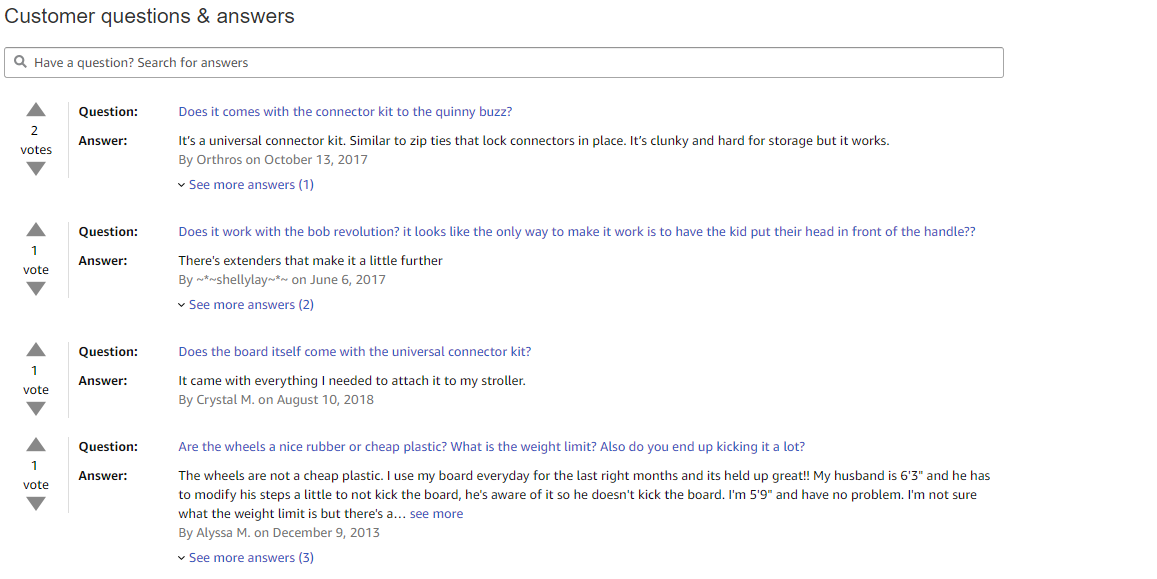
Take a look at how Lyfe Accounting used their audience’s most common questions to structure the FAQ on their bookkeeping services page below:

Doing so will greatly reduce the number of customer support calls and emails your business gets.
Social media posts can be another place to find questions to add to your FAQ page. LUS, a hair care company, gets tons of questions on their page, such as which product line different hair types should use and how long shipping takes.
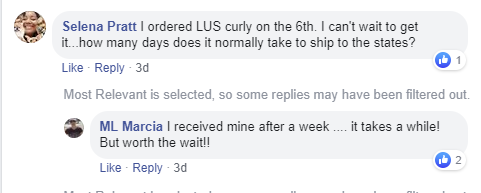
By answering these questions in their FAQ section, they know they are providing information customers actually want.
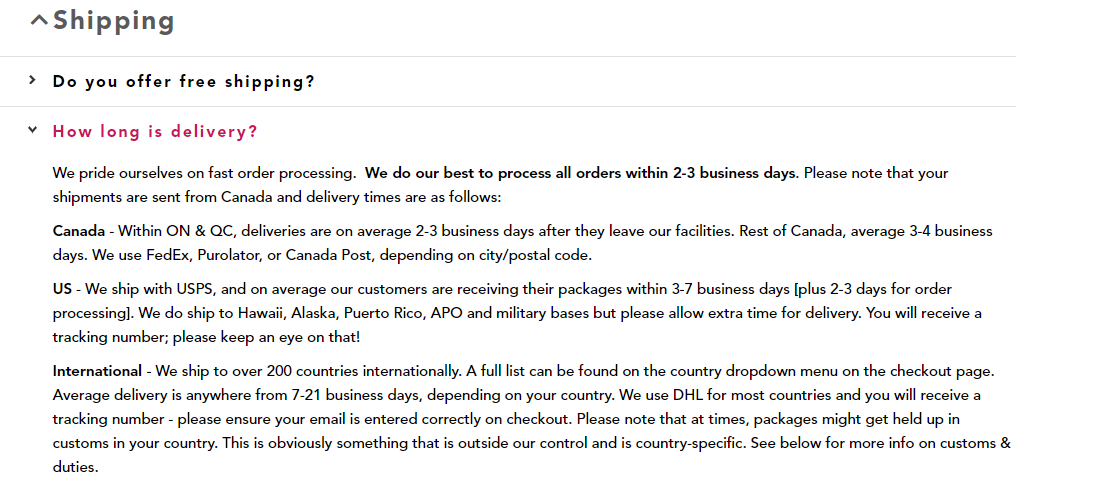
Use Polls For Social Media Content
The average business should post on social media at least once a day, sometimes multiple times on platforms like Twitter or Instagram.
You’ve likely got a lot on your plate…
You’ve started a blog and have blogs to write, emails to answer, and maybe even orders to get out.
Constantly coming up with ideas to post on social media can get tiresome, and that can impact the level of engagement you see.
Posting polls or surveys can be a fun way to interact with your audience and drive engagement.
Incfile uses polls to encourage comments and engagement on Facebook.

Travel blog Adventure For Less uses a similar strategy to ask travel-related questions, gaining valuable insights on how to better engage and solve customer pain points:

Using Facebook for polls can be done informally, like in the examples above, or you can use the poll feature, which tracks answers and shows the results in a bar graph.

Pro tip: For even more mileage out of your polls, you could write a blog post about the results and what factors might impact people’s opinions.
And remember, not all surveys need to be serious! A light-hearted, non-business related poll or survey can lighten the mood and help build a real relationship with your audience.
Don’t forget that you can use a social media tool to schedule these posts out ahead of time and fill your content calendar.
Audit Your Website’s Usefulness
How well does your website fulfill your user’s needs? Can they easily find the information they are looking for?
Your website’s usefulness needs to be top in mind when building a website, whether you hire a developer or use a website builder to design your site quickly and efficiently.
Even if you’re just building a landing page to drive traffic to one of your products… You want to make sure it serves it purpose, it’s useful, and it keeps the customer in mind.
User experience might not be particularly high on your list of priorities, especially when you’ve got a mile-long to-do list.
But it should be.
Are you aware of the ROI on customer experience?
It seems like a no brainer that positive customer experience leads to happier customers and better retention rates, right?
Here’s the thing: poor user experience is often silent, and it can kill your business.
If a customer can’t figure out how to check out or your pricing scale, they are unlikely to take the time to search for an email address and draft a message.
Nope, they are going to back out of your site and likely head to a competitor with an easier to navigate site.
The solution is simple: Make it easier for customers to communicate with your team.
Housecall Pro, for example, uses a live chat feature on their site, which allows customers to easily search their documentation or chat directly with a member of their team.
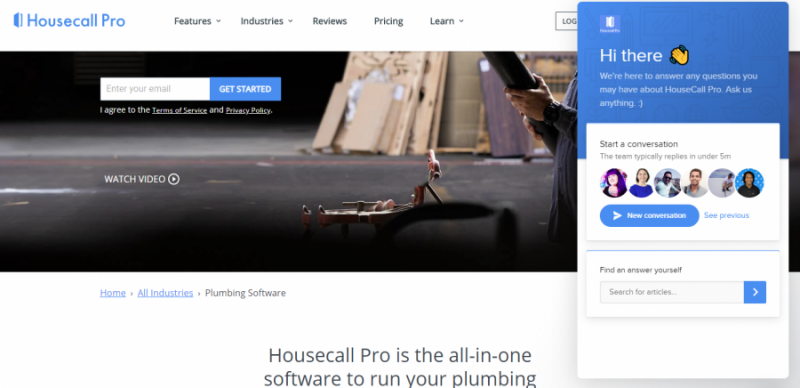
If you get the same questions from multiple customers, then you have a good idea that there is an issue.
For example, if you constantly get chat messages about pricing, then you know that is a topic that is really important to customers. You might consider adding pricing to your main navigation bar or providing a sidebar button that links to your pricing page.
Another option is to ask customers to rate your site from one to five stars before they leave through a simple popup. This will give you a barometer of how customers feel about your site, but won’t tell you specifically where they are struggling.
If you’re not sure if you’re ready to hit “publish”, check out this helpful website audit checklist.
Evaluate Your Purchase Path
How easy is it for customers to complete their purchase?
You understand how your site works, making it hard to locate bottlenecks in the process. A quick survey can help you interact with customers and uncover areas where you could improve.
But, before you make major changes, you need to make sure you are getting consistent, qualitative feedback.
Open-ended questions can leave you with a bunch of data you can’t use. Which is no good when it comes to making large changes. Consider using a tool like Qualaroo, which makes it easier to ask direct questions and get the information you need.
After a customer completes their purchase, you likely send out a confirmation email, right?
Consider using this email to ask customers to complete a short survey about how easy or difficult it was to make their purchase. Is there something you can do to improve?
Headspace, an online healthcare company, uses this short, slightly humorous email to ask users to complete their survey.
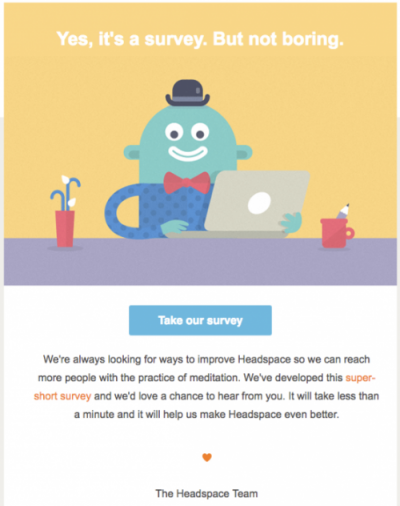
Consider including the amount of time it will take to complete the survey, which encourages participation.
Use Surveys To Segment Your Email List
The average worker receives nearly 100 emails every day. By 2022, experts expect that 333.2 billion emails will be sent and received every day.
For all the emails sent, most of them don’t even get opened. According to Hubspot, the average email open rate is around 37%.
Your well-planned, carefully constructed email has a lot of competition.
So, how can you increase the chances of people opening and interacting with your emails?
If you guessed surveys, you are correct!

You likely send out emails on several different topics. News, different products, maybe tips for specific target audiences.
Here’s the thing—not everyone is interested in the same type of content. Using the power of surveys, you can determine what type of content each user is interested in and create email segments in your email marketing strategies that allow you to send tailored content based on each subscriber’s job, interests, or even location.
According to a study by Lyris, segmenting email lists can increase open rates by 39 percent (PDF).
As an added bonus, email segmentation can also lower unsubscribes and increase revenue.
Most email software programs provide multiple ways to segment your list. For example, you could send an event email about your marketing conference just to people who are interested in marketing and live within 100 miles of the city where the event is hosted.
Or, a yarn store could ask whether users are interested in information about knitting or crocheting and send each segment information related to the way they use the yarn they purchase.
A WordPress plugin could ask whether users are using their tool for a business or personal website, allowing them to send business tips to company users and easy marketing tips to personal users.
But you can only segment your emails if you have the information, which is where surveys come in. For best results, only ask questions that would really help you target your content. Asking too many questions is a quick way to lose responses!
For example:
- What industry are you in?
- What type of information are you most interested in? (Give three to five options)
- What is your position? (Give three to five options)
- Where are you located?
The exact questions you ask will vary based on your niche, of course, but be sure not too get to granular, or you risk over segmenting your list, which can cause its own issues.
Get to Know Your Customers Through Surveys
How well do you really know your customers? How well do you understand the things they like, the topics that are important to them, or the questions they have?
Understanding who your customers are is the first step to creating both an effective marketing plan and providing a product or service that actually helps your customers…
And it takes customer engagement to master both of these things.
When used strategically, surveys can be a powerful tool to help you better understand the people you serve.
Ready to get started? Your next step is to choose the right customer survey software. Look for a platform that offers plenty of design features, so you can make the survey your own. You also want the survey to be easy for customers to use and allow you to make the most of the data you gather.
About the Author

Adam Enfroy writes about how to scale your blog like a startup to 150,000 monthly readers at www.adamenfroy.com. He launched his blog in 2019 and started generating over $20,000/month in revenue within 7 months. He wants to teach new bloggers how to do the same.You can follow him on Facebook, Twitter, and his world travels on Instagram.

